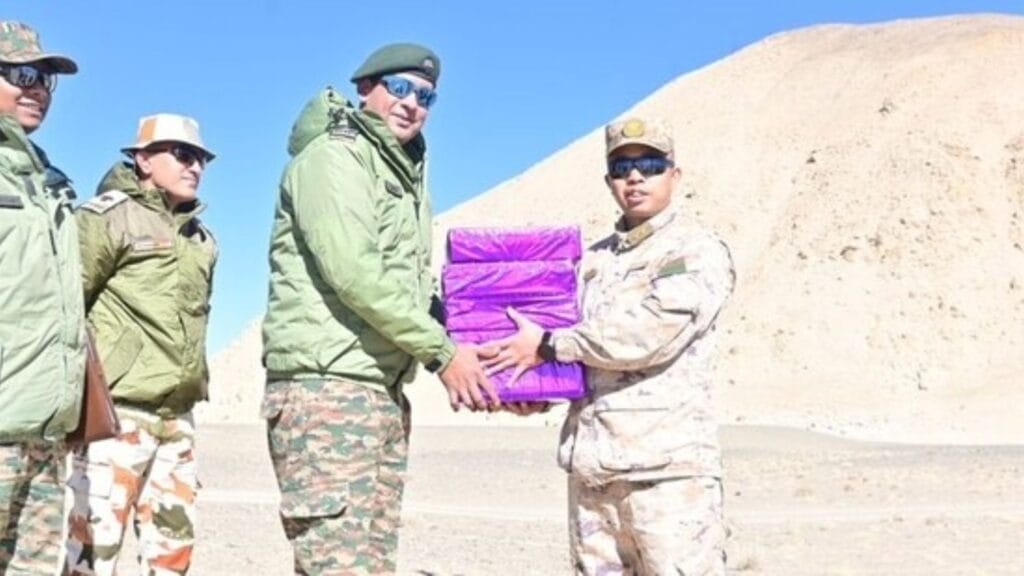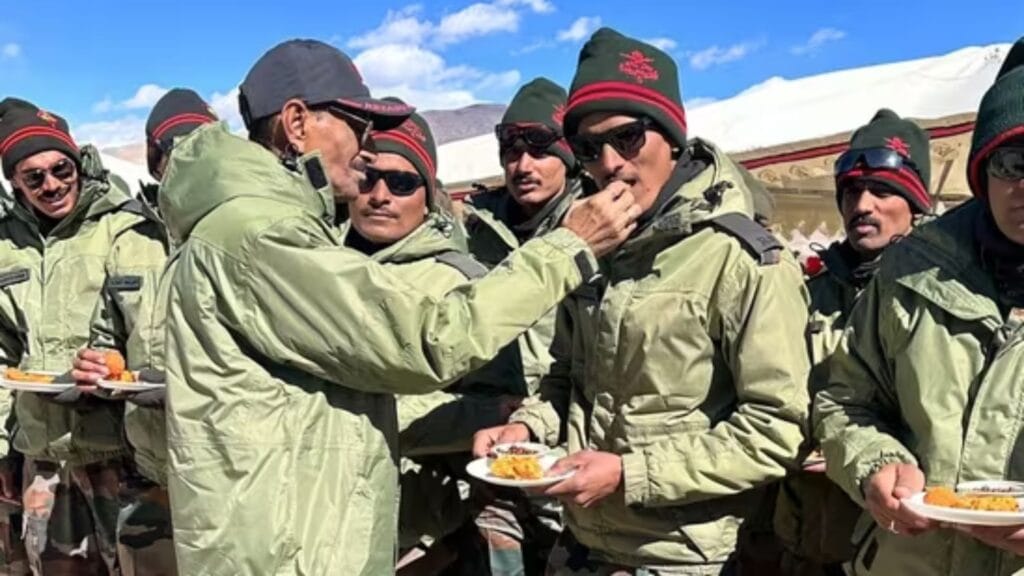A day after a successful disengagement at two disputed areas, Demchok and the Depsang Plains, in Eastern Ladakh, Indian and Chinese troops exchanged sweets at several points along the Line of Actual Control (LAC) on Diwali. Then symbolic exchange could be considered closer to the thawing between the nations after so many taut years but, at its minimum, does question that: “Is this all enough after a while to have things turned over?”.

Background of the Conflict
To understand the significance of this gesture, one needs to go back to how India and China’s relations have deteriorated especially since 2020. Relations escalated sharply after aggressive pushing by Chinese troops along the LAC, which most people view as an unofficial border separating the two nations. The situation hit a tragic peak in June 2020 when a confrontation in the Galwan Valley resulted in the death of 20 Indian soldiers. Since then, both nations have held ground against the other with a combination of caution and distrust. Anything like goodwill is pretty significant in this context.
Sweets to be exchanged at all border personnel meeting points between India and China on account of Diwali. pic.twitter.com/6WPPWREXMn
— Megh Updates 🚨™ (@MeghUpdates) October 30, 2024The tradition of exchanging sweets between the Indian and Chinese armies has continued for years on national festivals like Diwali and Chinese New Year. This practice was, however, halted during the heightened tensions post-2020. Therefore, seeing this exchange revived during Diwali feels like a small yet meaningful step in the right direction.
Recent Disengagement Efforts
This is the sweet exchange that follows the recent disengagement in the Demchok and Depsang areas, which has been a point of friction. For weeks, diplomats and military officials had been holding talks, finally reaching an agreement on October 21. The deal was meant to de-escalate the situation and lay down terms for troop withdrawal, particularly at contentious spots. The disengagement was finalized just a day before the festival of Diwali, with both sides deciding to resume patrolling soon under new terms set by ground commanders.

Personally speaking, although the de-escalation move seems quite positive, at least at this juncture in time, an important consideration is that it refers to only some selected zones and not all others along LAC. For example, while the other part sees partial de-escalation, the entire parts still await a final call of decision. Therefore, anything here can spark, if no permanent resolution.
A Gesture for the Future?
Exchanging sweets might seem little, but sometimes these small gestures mean a lot. Both armies have done this many times before, and perhaps bringing it back during Diwali will be that reset button for the two sides. These traditional gestures, they are signifying openness to cooperation and maybe even long-term peace. But, at the same time, it’s also clear that one sweet exchange does not erase years of distrust.
Perhaps it would be a good staring point for the talks from both sides between the local commanders to come up with rules of new patrolling to keep patrolling out from each other’s domains.
NEW: Indian, Chinese troops exchange sweets at several border points on Diwali pic.twitter.com/HwX0GzhYEg
— Shashank Mattoo 🇮🇳 (@MattooShashank) October 31, 2024It’s wonderful that such apparently minute acts were taken as opportunities to open free communication and reduce possible misunderstandings.
Real Change or Temporary Peace?
That being said, however, we should not neglect the problems. The stand-off in 2020 laid bare deep issues with communication and trust, and just how fast things can fall apart. In the future, I think that only genuine, sustainable peace can be achieved when both nations take more concrete measures on these issues, perhaps by adopting a more formal mechanism on how to handle incidents at the LAC. If not, then another incident will be there to ruin whatever progress is made.
Conclusion
In conclusion, the Diwali sweet exchange between India and China may be a positive signal of things to come, but it’s also essential to approach it with caution. Yes, it’s a warm gesture, and it brings hope for a more peaceful future, but without deeper efforts to address the core issues along the border, there is a risk that this may just be a temporary pause rather than a change.
While I would like to comment that this might be the beginning of eternal peace, only time will show if these gestures will finally close the gap between India and China. Meanwhile, it is warming to have even a step forward at all, and maybe even this might bring aboard a more stable cooperative approach between the two significant giants in Asia.
Minutes by M31GlobalNews






